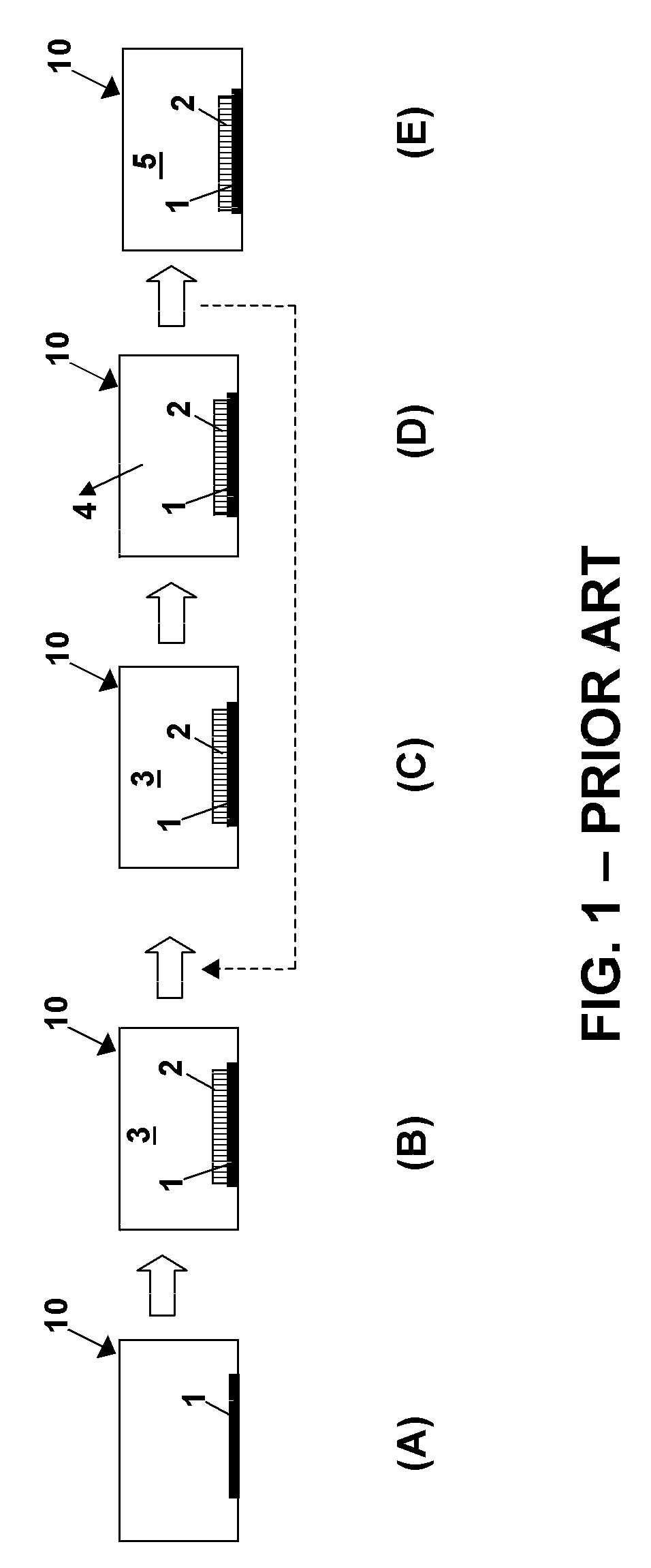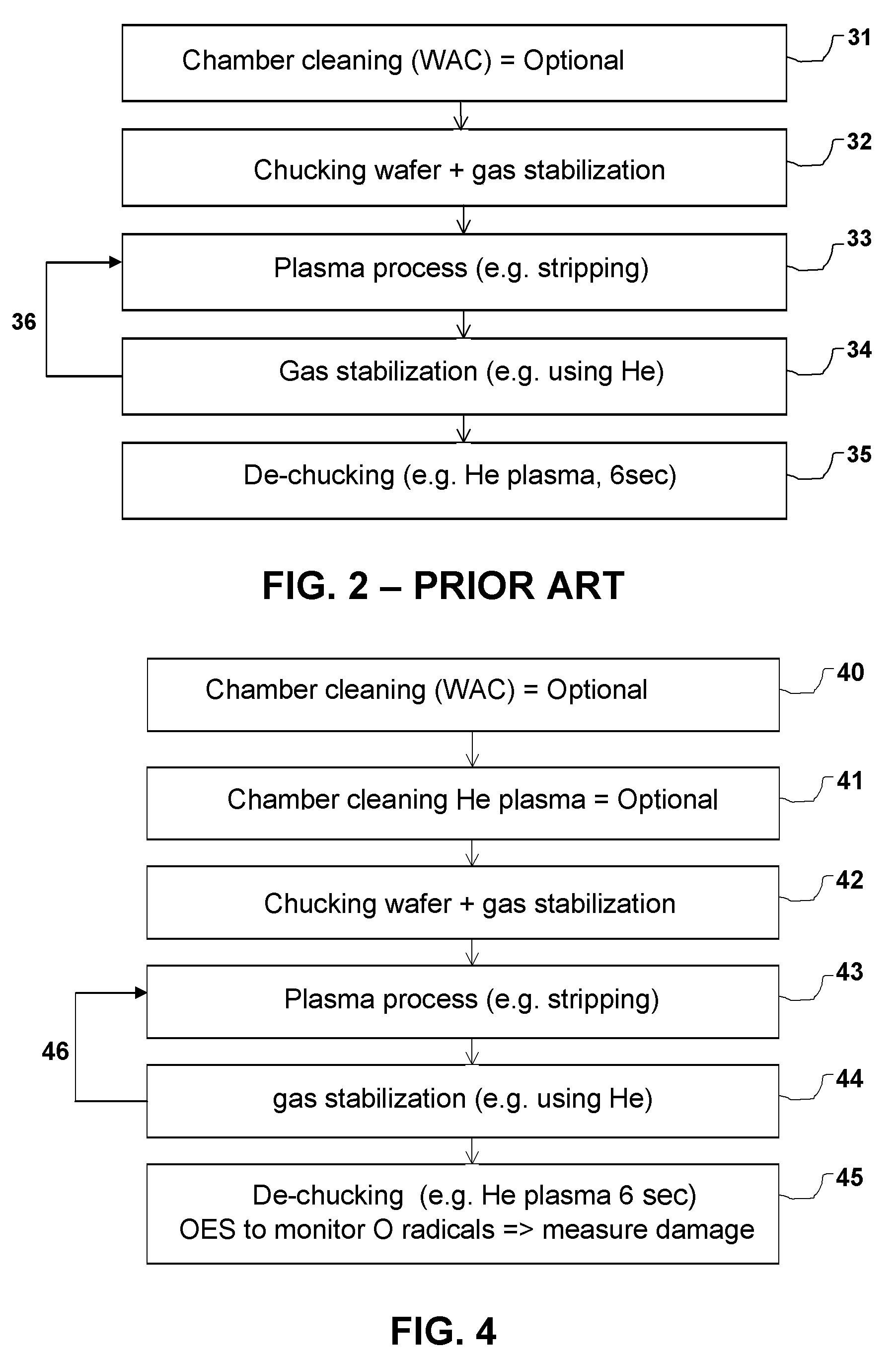Quantification of hydrophobic and hydrophilic properties of materials
- Summary
- Abstract
- Description
- Claims
- Application Information
AI Technical Summary
Benefits of technology
Problems solved by technology
Method used
Image
Examples
example 1
Monitoring of Plasma Damage after O2 / Cl2 Plasma Processing Using a He Plasma to Create Oxygen Radicals during De-Chucking Step (ex-situ)
[0072]Experiments were performed in an industrial plasma etch chamber 20 (LAM Versys 2300 STAR equipped with OES analyzer with spectral resolution of 2.5 nm). Wafer temperature during all the experiments was 30° C. Several plasmas were used in the whole processing sequence. An O2 / SF6 plasma was used for waferless auto-cleaning (WAC) of plasma chamber sidewalls 23 and O2 / Cl2 was used to simulate photoresist removal on the low-k material. A He plasma was used for removing the wafer 22 from the chuck 21 as well as for simultaneously releasing radicals from adsorbed water to the low-k material and thus to simultaneously monitor (or evaluate) plasma damage caused by the O2 / Cl2 plasma to the low-k material.
[0073]The low-k material used in these experiments was porous carbon doped silica (BDIIx® obtainable from Applied Materials) deposited by Plasma Enhanc...
example 2
Correlation of FTIR and WEP with Chemiluminescence to Provide Quantitative Data about Degree of Plasma Damage
[0075]Two alternative techniques were used to monitor plasma damage due to O2 / Cl2 plasma exposure to a porous low-k material, i.e. Fourier Transform InfraRed (FTIR) and water based ellipsometric porosimetry (WEP).
[0076]To monitor hydrophilic OH groups by FTIR the absorbance of silanol groups was monitored (see FIG. 9, (A)). Taking into account the fact that the degree of plasma damage is proportional to absorbance of —OH groups incorporated into the bulk of low-k materials, the degree of plasma damage can be evaluated. The absorbance of a pristine sample (non-damaged low-k material) was monitored first and the amplitude of OH groups is close to zero and intensity of the C—H peak is the highest one (corresponding to hydrophobic Si—CH3 groups). This can be determined by FTIR, as mentioned before. Curve “Ref.” in FIG. 9, (A) shows a reference sample exposed during 20 s to a He p...
PUM
| Property | Measurement | Unit |
|---|---|---|
| Electric charge | aaaaa | aaaaa |
| Nanoscale particle size | aaaaa | aaaaa |
| Energy | aaaaa | aaaaa |
Abstract
Description
Claims
Application Information
 Login to view more
Login to view more - R&D Engineer
- R&D Manager
- IP Professional
- Industry Leading Data Capabilities
- Powerful AI technology
- Patent DNA Extraction
Browse by: Latest US Patents, China's latest patents, Technical Efficacy Thesaurus, Application Domain, Technology Topic.
© 2024 PatSnap. All rights reserved.Legal|Privacy policy|Modern Slavery Act Transparency Statement|Sitemap



